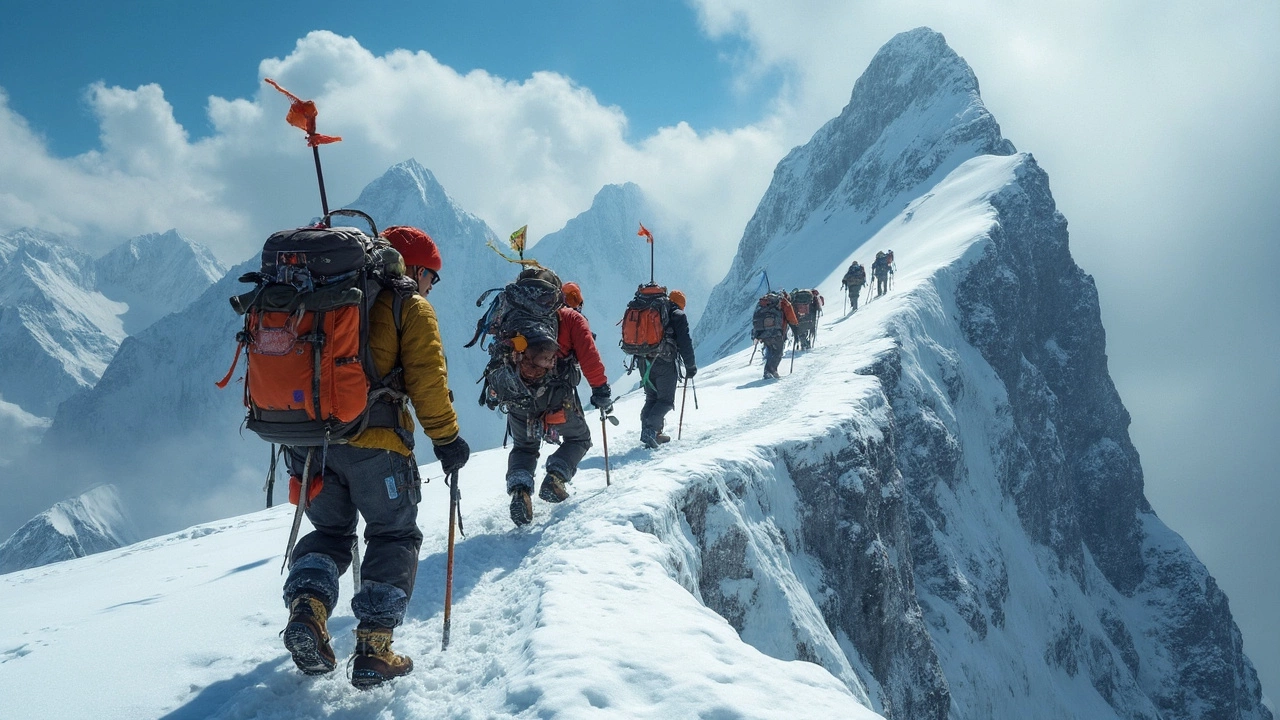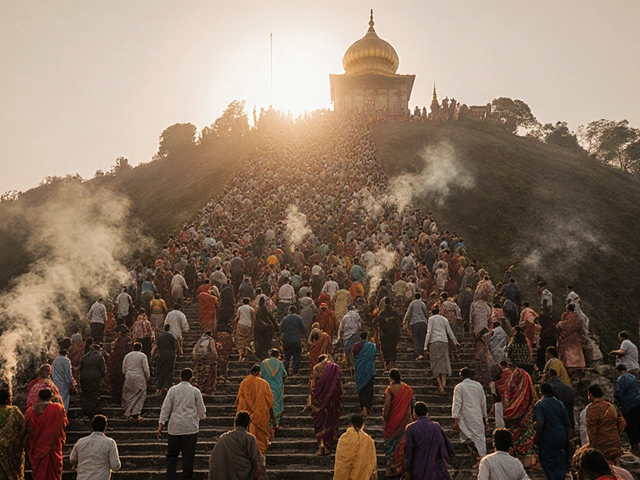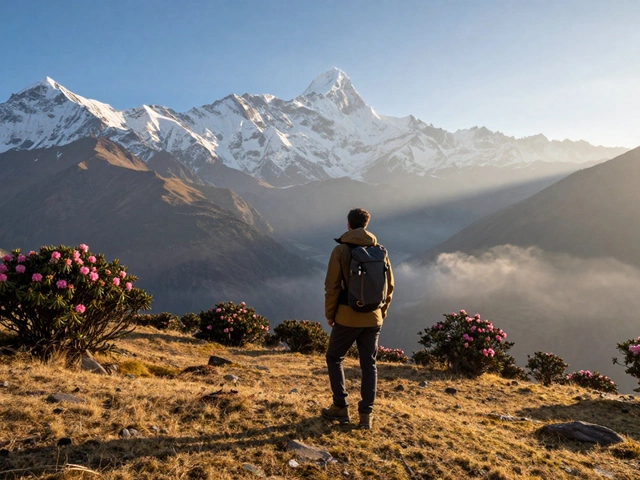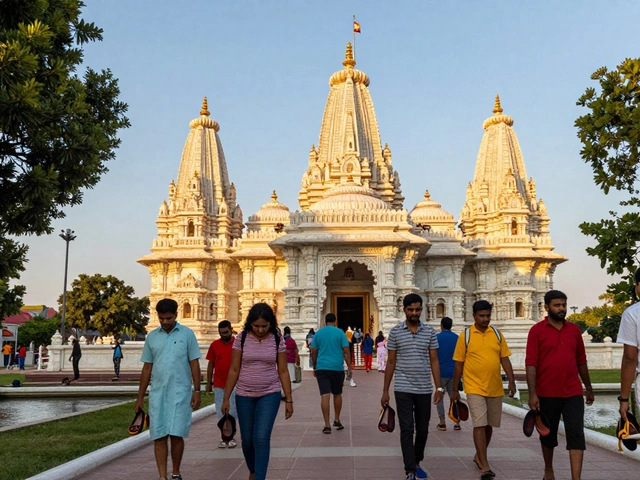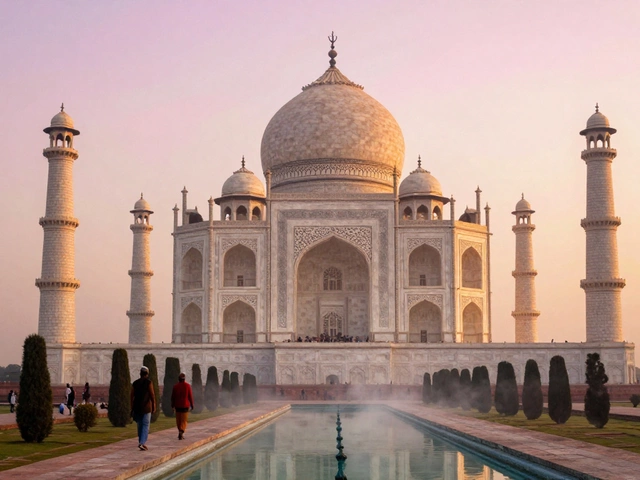Ask any trekker, and you’ll start a heated debate—what’s the hardest trek in India? Some mention bone-chilling nights in Ladakh. Others shudder at the memory of sticky monsoon trails in the Northeast. Everyone has a story (and a few scars) to back it up.
But let’s clear the fog for you. There are dozens of tough routes across the country, from snowy Roopkund to dizzying Stok Kangri. Still, nothing quite matches the solid test of the Great Himalayan Trail. It’s not just about steep climbs or crazy weather; it’s the sheer length, remoteness, and the daily hustle just to stay on track—literally and mentally—that sets this one apart.
If you dream of bragging rights or just want to test your limits, you’ll want the facts straight. How tough is ‘toughest’ in Indian trekking? What makes the Great Himalayan Trail extra wild? And what does it really feel like when the route throws its best and worst at you? Grab your notepad—this guide will save you hours of Googling (and maybe a few headaches on the trail).
- How We Define ‘Toughest’ in Trekking
- Inside India’s Hardest Trek: The Great Himalayan Trail
- Real Stories: What It’s Actually Like
- Tips for Surviving (and Enjoying) the Challenge
How We Define ‘Toughest’ in Trekking
So, what does ‘toughest’ really mean in the trekking world? It’s not just about how high you climb or how fast you cover ground. The mix of factors that make something the toughest trek India has to offer are pretty brutal when you stack them up.
First off, consider the distance. Some treks are short but steep, others are endless slogs. The Great Himalayan Trail takes the cake at around 1,700 km in India alone. That’s the length of a trip from Delhi to Chennai—on your own two feet!
- Altitude: Oxygen drops. Even fit trekkers struggle above 3,500 meters. GHT regularly hits way higher than this.
- Remote Terrain: We're talking isolated mountain passes, glaciers, landslides. Forget roads—some days there aren’t even proper trails.
- Weather: Sudden snow, hail, rain in the same day—sometimes in the same hour.
- Supplies: No shops or villages for days. Carrying or rationing food is a daily headache.
- Navigation: GPS glitches, signposts are rare, maps can’t always be trusted. Getting lost is a real risk.
Here are some quick stats comparing tough Indian treks:
| Trek Name | Max Altitude (m) | Length (km) | Duration (days) | Remoteness |
|---|---|---|---|---|
| Great Himalayan Trail (India) | 6,146 | 1,700 | 120-150 | Very High |
| Stok Kangri | 6,153 | 40 | 7-10 | Medium |
| Chadar Trek | 3,390 | 62 | 9 | High |
| Roopkund | 5,029 | 53 | 8 | Medium |
But it’s also about mindset: Long days, hard walks, and extreme isolation mess with your head. When tiredness kicks in, so does self-doubt. That’s when a tough trek really starts to live up to its name.
If you’re measuring ‘toughest,’ you’ve got to look at the whole picture: altitude, distance, wild weather, lack of help, and just how much the trek pushes you hour after hour. That’s why the winner isn’t always obvious from a map—it’s what happens when you’re way out there, far past your comfort zone.
Inside India’s Hardest Trek: The Great Himalayan Trail
If we’re talking honest, the Great Himalayan Trail (GHT) is as bold as trekking gets in India. It’s not just a long walk—think about a route that stretches about 1,700 km just in India, crossing five Himalayan states, from Arunachal Pradesh in the east to Ladakh in the west. That’s like walking from Delhi to Mumbai and back… but now add landslides, snow, dodgy bridges, and basically zero phone signal for days on end.
The full GHT takes months to finish. Most folks don’t try the entire trail—tiny sections like the Lamkhaga Pass trek or Zanskar traverse alone can wipe you out. People who attempt the whole thing? That’s a rare breed. Just 10-15 people (most are from abroad or hardcore Indians) complete the full stretch every year. A couple of years back, an Indian duo made headlines for finishing the Indian GHT in under 50 days, but most hikers take way longer, often 100-120 days, and some never finish at all.
- Highest point: Lamkhaga Pass at 5,282 meters. You’re gasping from thin air, not drama.
- Longest section without resupply: Sometimes you go 8-10 days with only what you’ve packed—no shops, no chai stalls, nothing.
- Temperature swings: 35°C in the Lower Himalayas, dropping to -20°C at the highest passes. Forget packing light; you need everything.
- Wildlife: Snow leopards, bears, and wolves are found along the route. Most trekkers will only spot mountain goats, but the point is, you’re deep in their territory.
The GHT is not exactly mapped out with glowing neon signs. Rivers shift, trails get wiped away in storms, and you have to rely on GPS, sherpas, or just your grit. Acclimatization isn’t just a checklist—mess it up, and you’re going home with altitude sickness. Permits can be a headache too: you need different ones for different regions, and border areas have strict army checkpoints.
So, if someone asks you about the toughest trek India boasts, now you know. The Great Himalayan Trail is brutal not by legend, but by cold, hard reality. And that’s why few ever tick it off their bucket list.
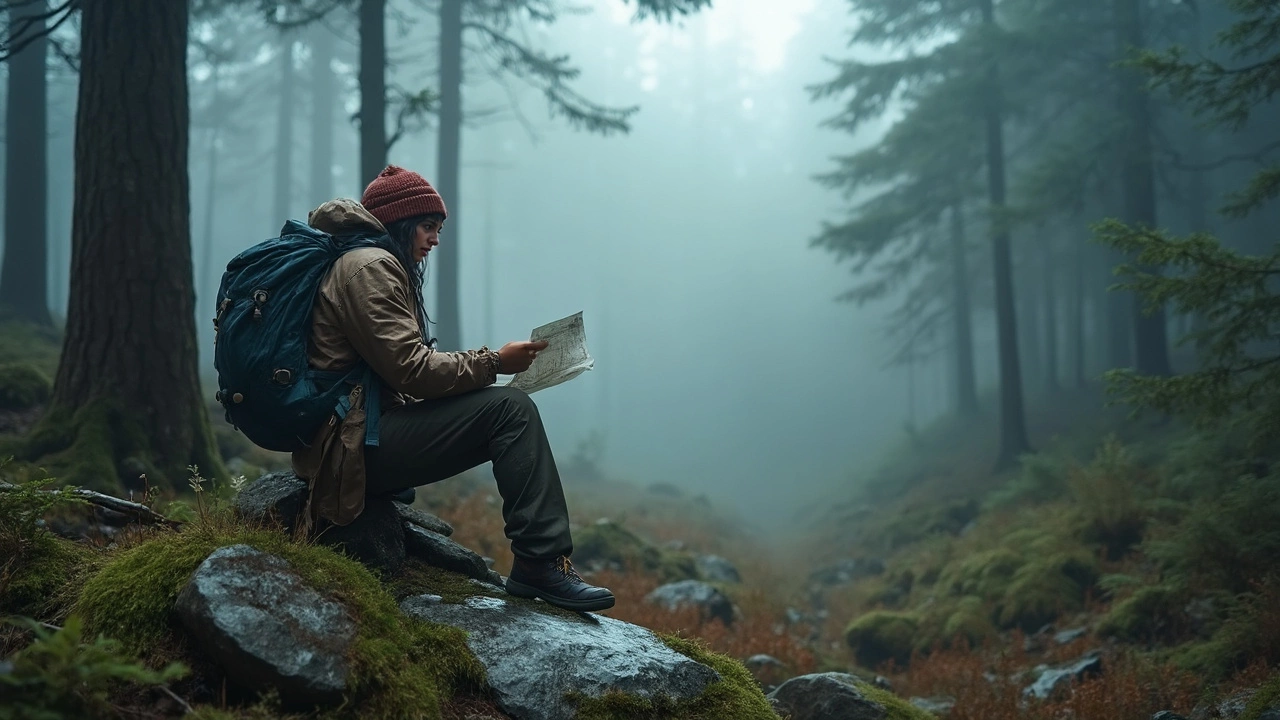
Real Stories: What It’s Actually Like
If you think the Great Himalayan Trail is just a long nature walk—think again. This route, which covers nearly 1,700 kilometers across five Indian states, is infamous for chewing up even the most experienced trekkers. The biggest challenge isn’t just one steep pass. It’s everything coming at you day after day: altitude, cold, loneliness, and trails that sometimes seem to vanish into thin air.
Shilpa, who completed a 41-day section last year, talks about mornings scraping ice off her socks and dealing with blisters so bad she once considered quitting mid-stage. She mentions, “The sunburn on my face was peeling off in sheets, and that was still the smallest problem that day.” Others, like Ankit from Himachal, spent nearly two weeks stuck in a remote valley due to a landslide, living off rationed instant noodles until the locals found him and guided him off the trail.
One of the wildest stats? You burn up to 7,000 calories a day hauling your gear and crossing 18,000 ft passes. That means if you’re not stuffing your face with nuts and parathas every hour, you’re going to feel it hard. People don’t just run out of food—they run out of steam, too. Some trekkers try to push 30 km a day but end up slowed down to a crawl by the third week, chafed and exhausted.
The real kicker: Only a handful of people have finished the entire Indian Great Himalayan Trail in a single attempt. It’s that rare. Local guides, who know the area inside out, say navigation is trickier than you’d think—GPS barely works in deep valleys, signposts are nonexistent, and sometimes you follow goat trails before realizing you’ve gone off-path. If you’re dead set on the toughest trek India has to offer, you can’t just rely on your gear or fitness. Mental grit is everything. Folks regularly talk about breaking down, missing home, and wondering why they even started. But there’s something about making it to that next snowy ridgeline that keeps them going—and brings them back for more.
- Prepare to walk 8-12 hours a day, often with very sketchy trails.
- Resupply points are spread far apart—some go six days without a proper meal.
- You learn to love simple comforts: dry socks, a cup of yak butter tea, and any hint of cell signal.
- Weather can flip fast: sunburn at noon, snow by sunset.
It’s wild, it’s relentless, and that’s why trekkers say every bad day on the Great Himalayan Trail makes the good views and finish line feel like you’ve walked on another planet—one you had to earn every single step of the way.
Tips for Surviving (and Enjoying) the Challenge
You’ve heard the stories: lost trails, freezing nights, random blizzards, and knees that won’t stop shaking. The Great Himalayan Trail isn’t just another trek – it’s days without cell signal, weeks above 4,000 meters, and food that sometimes turns into a surprise game of “guess what’s edible.” Here’s how you actually make it through, and maybe even love every exhausting bit.
- Do your prep. Don’t just watch YouTube videos and call it research. Read real accounts from trekkers who’ve hiked this trail. Most say you need at least six months of cardio, hill running, or stair workouts. You’re not just carrying a backpack; sometimes you’re dragging yourself through slush or boulders for 10 hours nonstop.
- Go slow with acclimatization. Some folks rush through the mountain passes and regret it. Instead, spend extra days at high camps. The risk of altitude sickness (AMS) is real. Pop your Diamox pills only after talking to a doctor, and never ignore headaches or shortness of breath. In 2024, an experienced group had to helicopter two trekkers out because they skipped rest days and thought they could “tough it out.”
- Double-check your gear. Temperatures can swing 20°C in one day – think boiling mornings and nights where your water bottle is a popsicle. Thermal base layers, a weather-proof jacket, gloves, a good sleeping bag, and sturdy boots won’t just save you from misery – they’re literally lifesavers if the weather takes a mad turn.
- Plan your food. Local food is fantastic (dal and rice never gets old!), but pack extra snacks like nuts, energy bars, and powdered drink mixes. On some stretches, especially in Western Sikkim and Arunachal, you might trek a full day before seeing any village or homestay. Keep a mini-stove if you’re fussy about hot meals; cold chapatis get real boring by day ten.
- Respect the route and the locals. Navigation is tricky in many spots. Mark your maps, and double-check with locals even if you think you know the way. Always ask before filming or taking photos, especially in small mountain villages. A smile goes a long way, and locals often have the best survival hacks for that section of trail.
And don’t forget: there’s no shame in taking a break. The toughest trek in India will test you, but it also offers moments you’ll never forget, like sunrises over Kanchenjunga and friendships built in smoky tea huts. Survive smart, and you’ll have a story that nobody can top.
